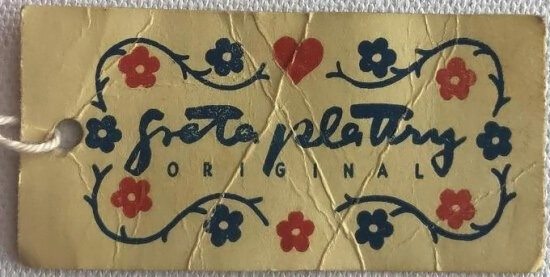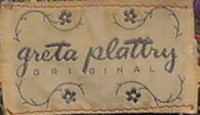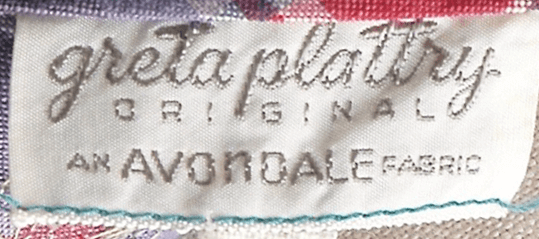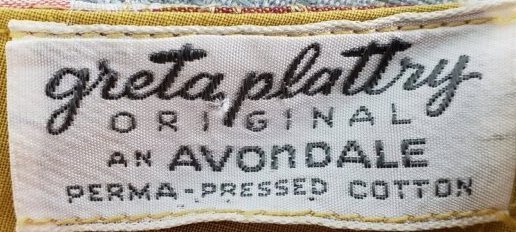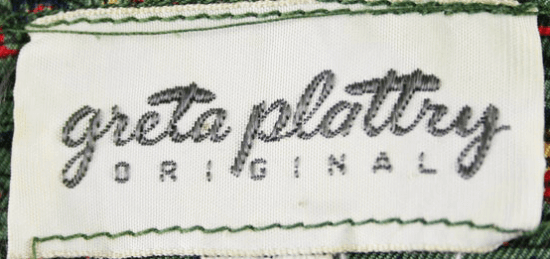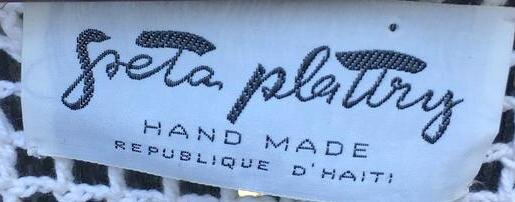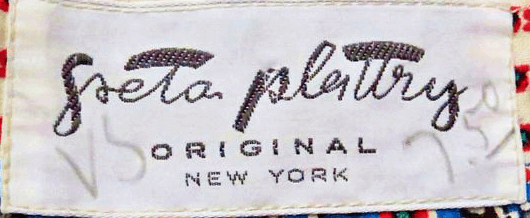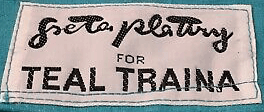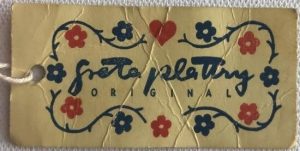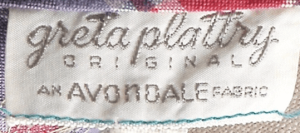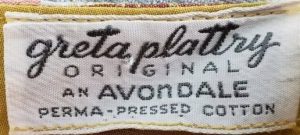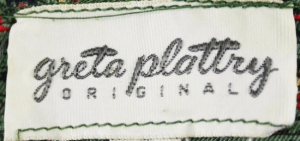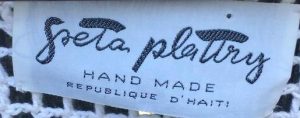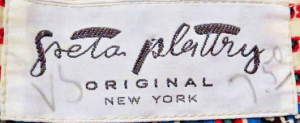Greta Plattry immigrated to the United States from Germany in 1937 and over the next four decades she built a successful career as a well-known designer of American sportswear. She initially made her name in the fashion industry by creating hand-knitted, Tyrolean-inspired separates and accessories. These were originally designed for skiing and other outdoor activities but they were soon adopted by stylish women for après ski lounging and casual daywear.
Plattry quickly adapted to the sartorial wants and needs of her customers by creating more versatile items. In the mid-1940s she branched out into designing peasant skirts and blouses. These also tended to incorporate Germanic-style themes, which were popular at the time, but Plattry didn’t limit herself to niche trends. Rather, she continued to expand her business in the post-war era by catering to the growing demand for clothing that was not only chic and modern but also informal and relaxed.
By the 1950s her collections offered a full range of women’s sportswear in moderate price ranges, including swimwear, playsuits, separates, and dresses. Like other popular American designers of her era, Plattry traveled throughout the world seeking inspiration. Her designs were influenced by both her European origins and by the historic and contemporary cultures of nations beyond Europe and the US. She often produced themed collections centered around design elements that were plucked from specific locales, and then modified to appeal to affluent American women. During this phase of her career, her labels typically read: “Greta Plattry Original” but the text sometimes promoted product tie-ins with Avondale fabrics.
In the early 1960s Plattry continued to design under her own label while freelancing for other companies. She designed for the knitwear company Cabot in 1961 and 1962, Imperial House in 1961, Zacari in 1962, and Montgomery Ward in 1963. During this phase of her career she also designed children’s clothing and launched her own perfume called “Pre-fur”, which was produced in 1963.
In 1966 Plattry relocated to Haiti where she employed local girls to produce hand-crocheted dresses and separates for a new line of sportswear. These clothes retailed in American boutiques and department stores including Lord and Taylor. The labels read: “Greta Plattry, Handmade, Republique D’Haiti”.
She returned to New York to design for Teal Traina from 1974 to 1975 but she maintained a house and a workshop in Haiti. For her Traina designs she often used Haitian-made lace as well as other fabrics that were embroidered and painted by hand in Haiti. These labels read: “Greta Plattry for Teal Traina”.
In the mid-1970s Plattry also designed under her own name using the label: “Greta Plattry Original, New York”. She left the fashion world behind in 1978 and she passed away in Connecticut in 2006 at the age of 97.
Written by Jennifer Binns of Hollie Point Vintage
